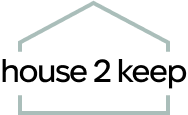Published on December 19th, 2022
Last updated on February 3rd, 2023
How To Organize Books In Your Home Library? Top 10 Ideas
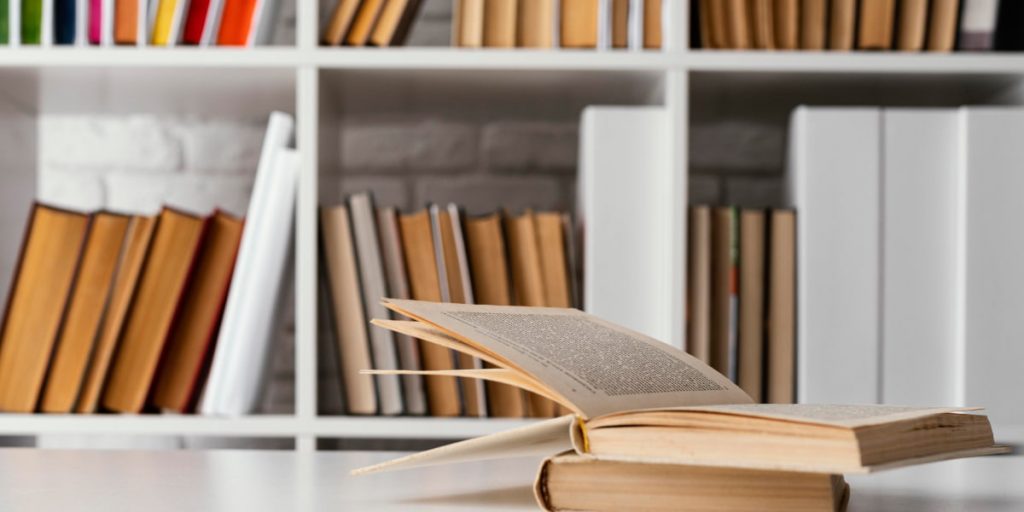
Every book lover dreams about well-organized bookshelves in their home libraries. Various favorite novels or fiction stories could find an appropriate place. As such, we can save time searching for something interesting to read. To this end, experienced bibliophiles have some secrets about arranging the bookshelves:
- Alphabet or genre catalogs;
- Order in size, color, or other physical specifications;
- Favorites or “spares”;
- QR coding;
- Pragmatism-based approach.
In practice, different resources recommend versatile ways to organize bulky bookshelves. These pieces of advice are essential to maintain your house. Also, a well-arranged home library influences mental activities. Thus, some psychologists consider home comfort significantly impacts neurological functionality and brain activity.
So, let’s find out how to create a cozy atmosphere for your reading space. With our guide, you will discover all possible methods to make your bookcase ideal.
10 Best Ways to Organize a Bookshelf Stuff
In different web resources, experts combine extraordinary and traditional techniques to organize bookshelves. However, only several methods are worth your attention. Your choice should refer to convenience and usability. Based on your preferences, combine several best book organization ideas. In the end, enjoy the result and keep reading.
Sort Your Books by Height
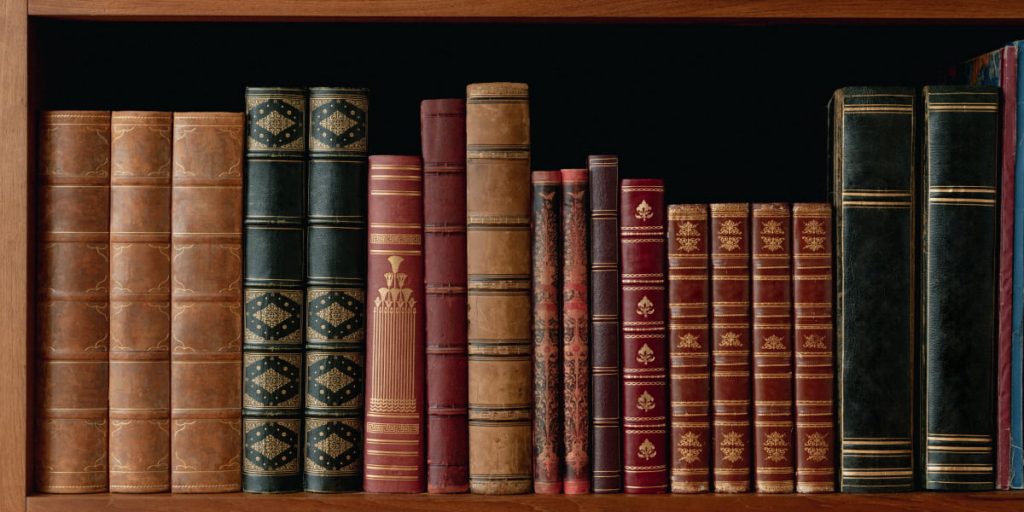
Book size is an excellent criterion for organization procedures. It can simplify search processes. As such, you do not lose small items hidden behind large vocabularies or manuals. Also, this method is effective for people with slight optical disorders. They can differ the book’s height better than the small font size. Also, you can create a unique solution on how to arrange your bookshelves. At the same time, you can face several issues which confirm the provided argument:
- Many furniture manufacturers do not foresee high books for estimates of bookshelves;
- Most genres do not meet book size. Thus, large albums of poetry, dictionaries, and scientific manuals are similar in dimensions. This method is effective if your library occupies a couple of bookshelves. Otherwise, you can be confused about this search algorithm;
- The prolonged maintenance of the books deteriorates the block part or covering. To prevent the harmful effects, place books vertically. Diagonal positions could provide negative consequences.
Anyway, small library assortments are acceptable for such book organization ideas.
Separate New Samples Beyond Old Ones
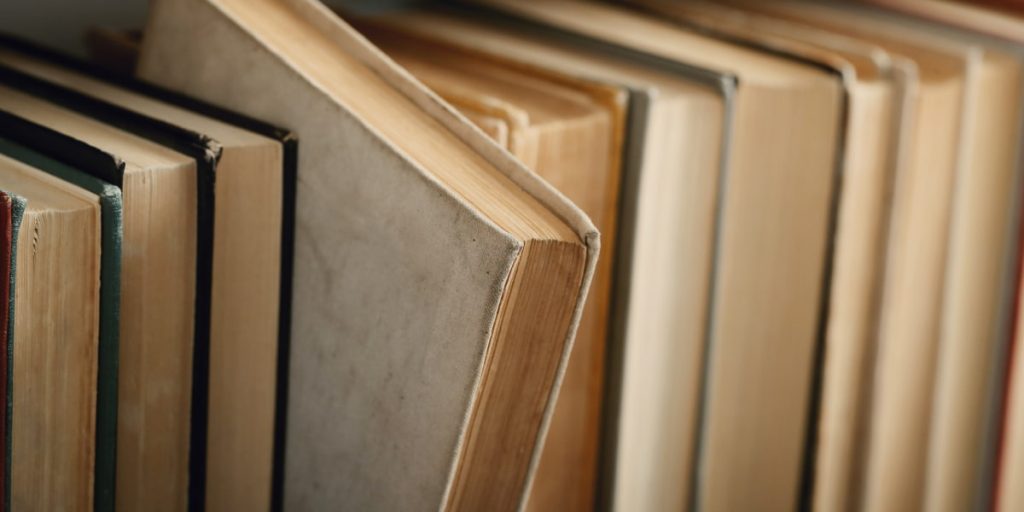
If you do not practice rereading, this method is ideal. Some people follow the straightforward principle – Never return to the reviewed literature. Therefore, you can organize your bookshelves in several steps:
- Put the read book on higher shelves, above the new purchases;
- Hide the examples behind those you plan to read;
- Keep such book cycling in your bookcase with this sophisticated organization.
Scientists could also argue about new-old library modifications due to constant research requirements. However, readers admire this arrangement technique thanks to its rational organization background.
Use Reading Popularity Concept

Families with several kids need a specific method to organize their bookshelves. In this case, a home library should meet the demands of fairy tale lovers and fiction followers. Thus, visually divide your bookcase into several zones and introduce straightforward organization procedures:
- Lower tiers contain books for kids. Children’s developing literature and comics should not be higher than readers’ height;
- Middle shelves include handbooks and manuals for pupils and teens. Such semi-adult zones also present books you can share with your elder children. For instance, classic literature like “Gone with the Wind” or “Hunger Games” trilogy refers to parents-and-children reading tastes;
- The bookcase top is traditionally for adults. But, college or university students sometimes use this zone for personal needs. Professional reference books or psychological works should hardly be acceptable for teens or kids.
Follow Strict Classification Rules
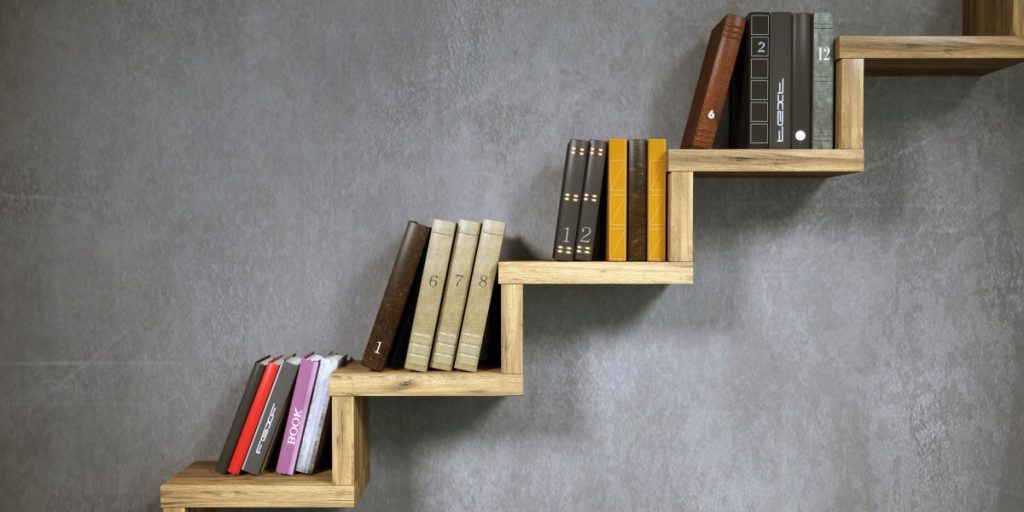
Family collections, which include inherited samples and time-after-time updates, need a rational classification. This method is eventually the best way of arranging bookshelves. You can choose any benchmark:
- Genre. Experienced librarians recommend this versatile book-sorting method. Its usability is high. Everything you need is to detect main groups – specialized and belles-letters. Subdivide each group into particular categories. For instance, work-related literature includes professional growth reference books, home maintenance guides, cookery books, or DIY manuals. Differentiate fiction examples by thriller, comedy, drama, detective, or fantasy. Also, consider poetry collections and novels. Thus, you should perform significant work to organize bookshelves. But the final result is worth your efforts;
- Author. If you prefer particular authors, use this arranging technique for your bookshelves. Stephen King, Dan Brown, and Joanne Rowling are not the only worldwide names in literature. They represent specific genres. If you like the particular novelists’ writing style, take this concept for classification. However, genre classification should prevail if you can not differentiate your favorites;
- Year of publication. This book organization applied in public libraries is adequate for home bookcase ideas. But, keeping in memory each book publication year becomes a complicated challenge. To simplify the memorization process, use card reminders separating each decade. Also, you can correct the conceptual algorithm of this method – epochs of authors or themes. The XIX, XX, or XXI centuries is an excellent way to sort your reading treasure understandably;
- Location. This category could name the nationality of the author. As such, you always maintain yourself in American novels, English detectives, Japanese hokku, and European poetry.
Merge the classification categories and apply a multi-layer approach. Thus, you could qualify your home library as a professionally organized book “store.”
Arrange Books by Colors

You can sort your library assortment in line with your interior design solutions. But how to find the required manual in time? Practical recommendations significantly improve this bookcase organization technique:
- Apply this method based on your library size. Small assortments are perfect for such experiments;
- Sort books by differentiating colors. Try to alter books in visually contrasting colors. For instance, red samples should be followed by green. Then continue a line by yellow, black, and orange. As such, you can find a necessary book in a few seconds. Creative people eventually qualify this technique as the best way to organize books;
- Add some signs. It could be handmade paper dividers. Here, you can show notes about selected authors or genres.
Integrate QR Coding or eCatalog

Software technologies that allow you to organize home libraries without significant effort. Everything you need is to download a free app with QR-generating capacities. Of course, the final result requires time to create unique signs for your favorite books.
Alternatively, you can compile an eCatalog. Its records contain all assortment of your bookcase with suitable organization opportunities. To this end, Google Docs or office software would be enough. A systematized list is essential if you frequently lend books to your friends.
For eCatalog, the algorithm of actions includes the following points:
- Grant each book you own a unique number. Thus, you can apply QR coding or straightforward manual numeration;
- Create an online or offline table with the required columns. The obligatory positions reflect several crucial components. They are the number of your library assortment, authors, titles, and borrowers. Also, you can insert colorful indicators. Green means a book is back. Red, in turn, signalizes the absence of your library item;
- Additionally, scan particular samples to make their e-copies. But, this affordable action is more suitable for rare publications.
Choose Alphabet Sorting Style
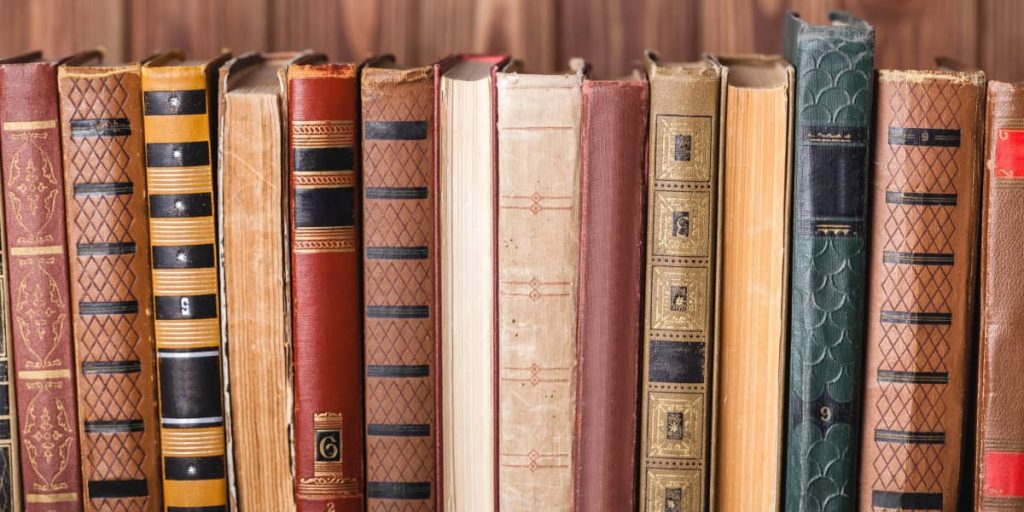
Like many book organization ideas, you can practice alphabet indicators for your library. What to choose for sorting basis – authors or titles – depends on individual preferences. Besides, you can create multi-layer tactics:
- Classify your assortments using by-author alphabet order, like many e-libraries or online bookstores. The first or last name to choose is up to you. According to usability advantages, surnames are a more convenient method to apply;
- Group each sorted category by alphabet systematization of book titles. If you have several novels by one author, this method is essential for your periodic search;
- Build a detailed paper list of achievements. Indeed, you need to draw up a specific catalog of your final results. Such actions help to maintain your library organized. Also, the formed table of publications tracks your book journey. Situations about borrowed or lost samples would never bother you.
Classify Your Books by Their Emotional Background
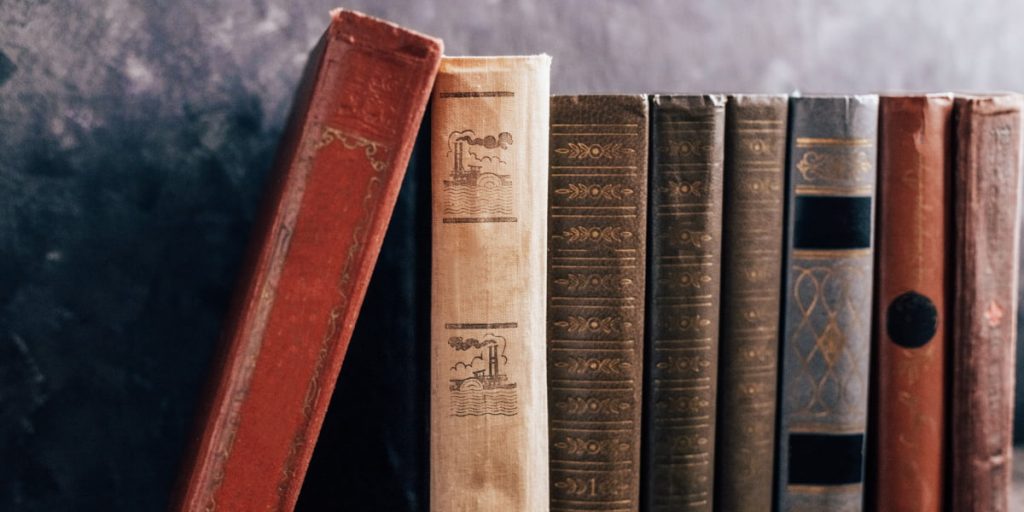
At first sight, this method seems weird. But extreme book funs or home organization gurus suggest extraordinary ideas. To implement this arranging approach, conduct the following instructions:
- Sort broad assortments of books into several categories. Selection criteria should associate with emotions they bear;
- Place books on the bookshelves from bottom to top based on the only rule. Each tier demonstrates a particular emotion. For instance, one layer gives your comics and works full of humor and comedy tricks. Horror novels by Stephen King or Bram Stoker occupy the other shelf;
- Fill each layer as far as you decide to enrich your library with a new sample.
- Emotional degrees should be up to your preferences. Typically, positive or neutral content should be in higher positions. But nobody forces devotees of detectives or nightmare novels to obey this principle.
Organize Bookshelves Under Individual Preferences
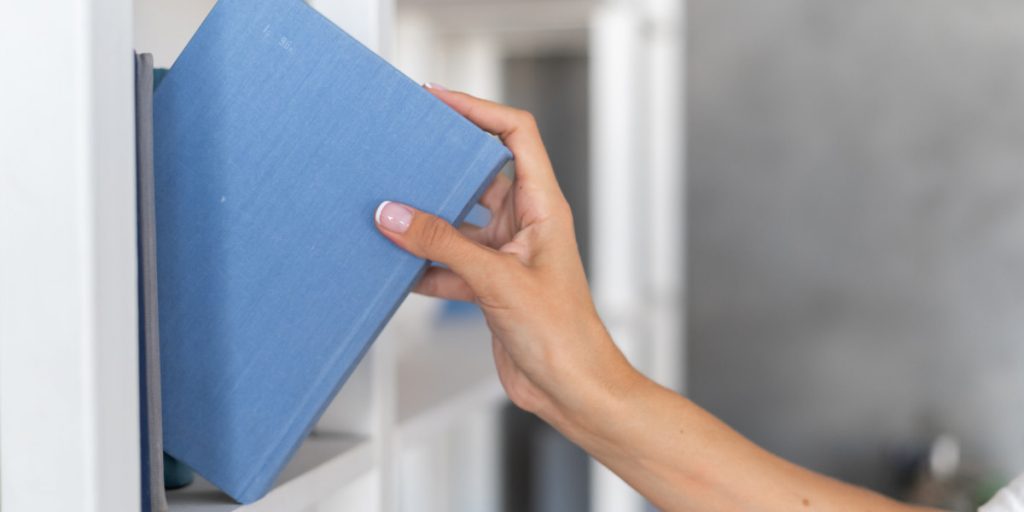
This method’s specifications imply proper planning activities. So to perform every step correctly, pay attention to crucial conditions:
- Skip all recommendations from famous authors or library managers. The other name of this method could be well-organized chaos. Hence, your inner attitudes and thoughts should prevail. Upon your organization logic, you remember positions of the classified books faster;
- Use personalized signs to identify specific genres. Your actions should resemble document management techniques. Thus, you never lose the necessary books. Also, you know how to organize books dedicated to various spheres of knowledge;
- Strengthen your deliverables with paper notes. Clues give you information if you forget the proper place of some publications.
Practice Dewey Decimal Classification

Dewey’s classification is helpful for huge public libraries or academic centres. It comprises groups with subdivided units. If your library occupies a separate room and collects hundreds of items, this method is also for you. According to practical performance aspects, this method qualifies as complicated.
All categories offered by Dewey’s classification include:
- Generalities
- Philosophy;
- Religion;
- Social Science;
- Languages;
- Natural Sciences;
- Applied Sciences;
- Arts and Recreation;
- Literature;
- Geography and History;
- Biography, and Collective Biography.
Within each group, you can experiment and create helpful collaboration. For instance, integrate the best way to organize books on your demand. Hence, sort them chronologically or choose genre systematization.
Summary
Making a cozy atmosphere requires a little time and a pinch of desire. Experiment with the home library organization method until you find the most suitable one. Also, you can explore more advice about how to arrange your home stuff. Thus, you can enjoy reading your preferable literature without concerned feelings.
FAQ
Which categories of arranging books are acceptable?
Everyone who wishes to maintain a well-organized library should focus on four main criteria:
1. Physical parameters of publications: color, size, or height;
2. Conceptual parameters: authors, genres, or themes;
3. Supplementary parameters: personal attitudes, feelings, or scientific classification approach.
How to make your bookshelves organic to interior design solutions?
Interior designers recommend avoiding bookcase overloading, which leads to organizational disbalance. The rule of three is acceptable for decorating this little space. Visually divide each bookshelf into three parts and fill them with books and accessories as you wish.
How do you organize books in a small space?
Limited apartment or house size is not a problem for arranging bookshelves. Skillful book lovers and design enthusiasts try to use the available space maximally. Multi-layered cabinets or embedded leisure-and-work furniture could place all books. Also, the stacks-on-stacks method would be perfect for numerous samples.
Is it better to pack books vertically or horizontally?
Everything depends on your library size and available space inside your house. But publicists recommend putting your books on a flat surface on the backside. Thus, they prolong their lifespan and keep their fresh look longer.
